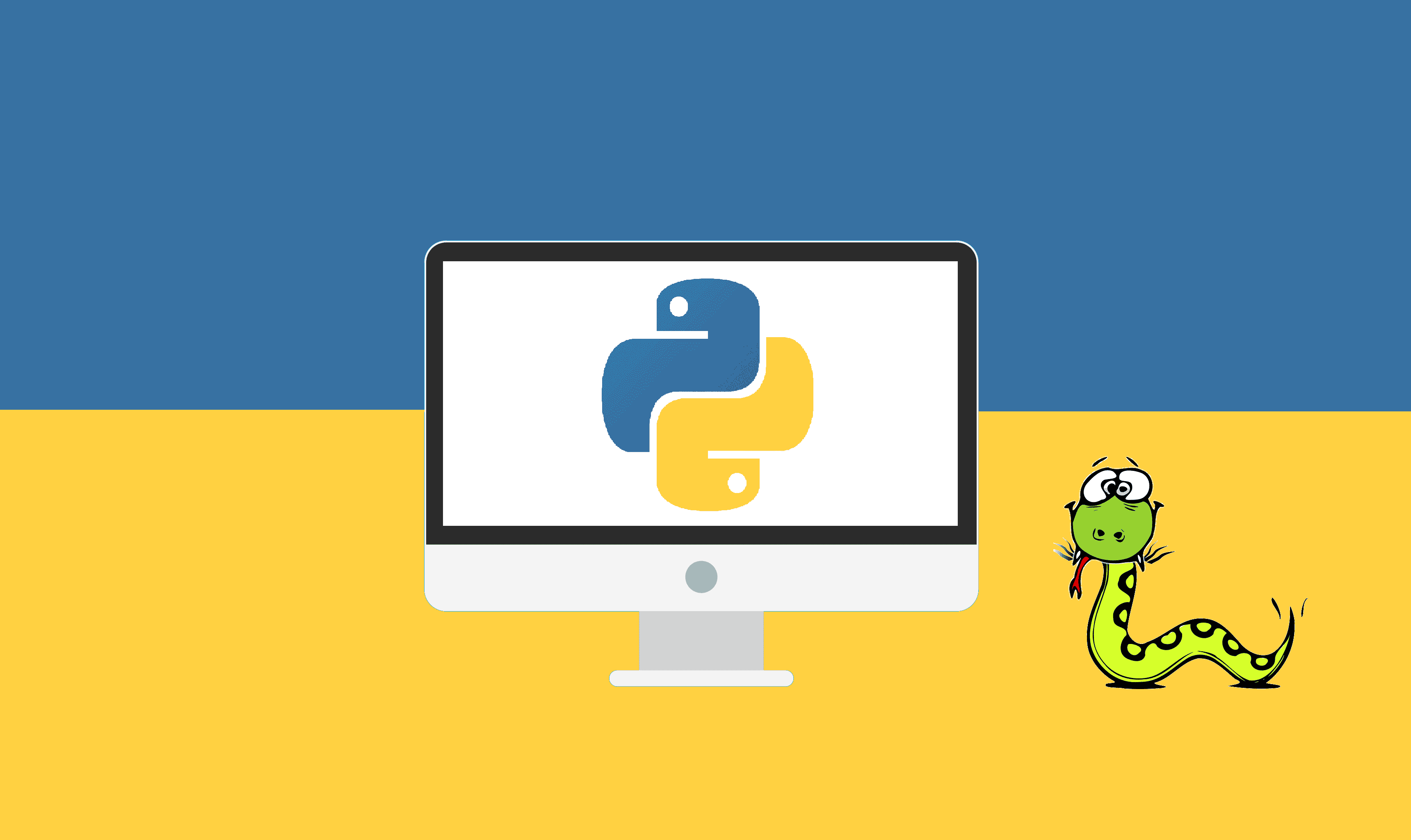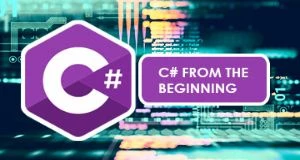In this course, you will learn the Python Programming Language with real time coding exercises in Jupyter Notebook, in a very easy to understand language.
First of all, you will see how to install and start using the Jupyter Notebook.
Then we will start with the various useful topics of Python.
Lets have a look at some theoretical part (not covered in video lectures).
Introduction -
Python is a high-level programming language that uses instructions to teach the computer how to perform a task. Python is an easy to learn, powerful programming language.
A language which is closer to the human language (like English) is known as a high-level language.
Python provides an easy approach to object-oriented programming.
Object-oriented is approach used to write programs.
Python is a free and open source language i.e., we can read, modify and distribute the source code of Python scripts.
It was developed by Guido van Rossum and was released in 1991.
Python finds its application in various domains. Python is used to create web applications, used in game development, to create desktop applications, is used in Machine Learning and Data Science.
How Python Works ? -
We write instructions in Python language.
Python is an interpreted language, so there is no need to compiling it.
Python programs runs (executed) directly through source code. The source code is converted into Intermediate Bytecode and then Bytecode is converted into the native language of computer (i.e., machine language) internally by Python Interpreter. The code is executed and the output is presented.
Python Source Code > Intermediate Bytecode > Machine Language > Code Executed
What is a Program ? -
A Program is a set of instructions that tells the computer to perform a specific task. A programming language is the language used to create programs.
Eg. When we click on Play button on media player, then there is a program working behind the scene which tells the computer to turn on the music.
A built-in function is a function which is predefined and can be used directly. Eg. print()
Comments are the pieces of code which are ignored by the python interpreter. Comments are used to make source code easier to understand by other people. Python supports single line comments mean they can cover only one line.
The various topics explained in this course video lectures with examples are as follows -
1. VARIABLES
a = 2 , b = 1.2 , c = ‘Ram’, d = lambda (‘any function’)
# Variables are used to store values. The stored values in the variables can be used later in the programs. We can retrieve them by referring to the variable names.
2. DATATYPES IN PYTHON
Integer (int), Float , String (str) , List , Tuple , Set , Dictionary
3. String – String is a series of characters, surrounded by single or double quotes. Eg. “Hello”, ‘Hello999’, ‘999’.
4. LIST
[ int /float / str ] à A = [ 1 , 2 , 3.4 , 3.4, ‘a’ , ‘bcd’ ]
à Collection of data-types, Mutable : Values can be changed , Ordered : Values order will be as it is , Changeable , Allows duplicate values.
5. TUPLE
( int / float / str ) à B = (1 , 2 , 3.4 , 3.4 , ‘a’ , ‘bcd’ )
àImmutable : Values can’t be changed , Ordered : Values order will be as it is , Unchangeable, Heterogeneous Data, Allows duplicate values.
6. SET
{ int / float / str } à C = { 1 , 2 , 3.4 , 5.6 , ‘a’ , ‘bcd’ }
àValues can’t be changed but new values can be added , Unordered : Values order may change , Arrange the items in ascending order, Doesn’t allow duplicate values, Un-indexed.
7. DICTIONARY
{ Key : Value } à D = { K1 : 1 , K2 : 2 , K3 : 3.4 , K4 : 5.6 , K5 : ‘ab’ , K6 : ‘bcd’ }
à Mutable , Unordered , Doesn’t allows duplicate keys , Indexed, Keys must be unique & immutable.
8. CONCATENATION – Combining Strings
first = ‘Data’
last = “Science”
new = first + ‘ ’ + last + ‘ is the combined string’
9. “\n” – For next new line
print("My Name is", "\n" , "My city is ", "\n" ,"My country is")
print(‘Delhi’) , print(‘’) , print(‘Noida’) # To create a gap of one line between two strings.
10. LIST FUNCTONS
< Press ‘Tab’ button from the keyboard after typing the list name (A here) to show the available functions >
A.append(55) - To add a new value at the end of the list.
A.clear( ) – To clear/delete/blank a list.
B = A.copy( ) – To create a copy of the list.
A.count(5) – To count how many times a value occurs.
A.extend(c) – To add a new list in the existing list.
A.index(7) – To show the index of a value. # A.index(value, start_index, stop_index)
A.insert(3,66) – To insert a new value at a given position.
A.pop(3) – To delete a value with the help of index. # A.pop( )
A.remove( 55) – To delete a value from the list.
A.reverse( ) – To reverse the list.
A.sort( ) – To sort the list. # A.sort(reverse=True)
del A[ 1 : 4 ] – To delete some items from the list.
type(A) – To see the type.
List Concatenation - A = [1,2,3,4] , B = [5,6,7,8] ; C = A+B = [1,2,3,4,5,6,7,8]
11. TUPLE FUNCTONS
T.count(5) – To count how many times a value occurs.
T.index(7) – To show the index of a value.
12. SET FUNCTONS
S.add(5) – To add a new value 5 in the set.
S.clear() – To clear all the elements of the set.
S.copy() – To copy a set.
S1.difference(S2) – S1-S2 - It shows the elements of set S1 only.
S1.difference_update(S2) – It removes all common elements from the set1.
S.discard(x) – It will remove an element(x) from the set. If x is not in set, it will not show error.
S.remove(x) – It will remove an element(x) from the set. If x is not in set, it will show an error.
S.pop() – It deletes the first/random element of the set.
S1.Union(S2) – Set1 | Set2 – It shows all elements of set1 and set 2.
S1.Intersection(S2) – Set1 & Set2 – It shows common elements of set1 and set2.
S1.Intersection_update(S2) – Now set S1 will contain only common elements.
S1.isdisjoint(S2) – It returns True, if S1 & S2 don’t have any common values, otherwise False.
S1.issubset(S2) – It returns True, if all elements of S1 are in set S2.
S2.issuperset(S1) – It returns True, if all elements of S1 are in set S2, otherwise False.
len(S) – It shows the no. of unique elements in the set.
S1.symmetric_difference(S2) – S1^S2 – To show the non-common elements from S1 and S2.
S1.symmetric_difference_update(S2) - Now set S1 will contain only non-common elements.
S1.update([4,5,6]) – To add multiple items, in list/tuple/set form.
13. DICTIONARY FUNCTONS
D.clear( ) – To delete the dictionary.
E = D.copy( ) – To copy a dictionary.
D.get(‘K1’) – To get the value against a key in the dictionary. If the key is not in dictionary, it will show None, without showing any error.
D.items( ) – To show all the items of a dictionary.
D.keys( ) – To show all the keys of a dictionary.
D.values( ) – To show all the values of a dictionary.
D.pop(‘K1’) – To delete the key alongwith its index.
D.popitem( ) – To delete the last key with value.
D.setdefault(‘K3’) , D.setdefault(‘K4’, value), D[‘K4’] = value - To add a key at the end of the dictionary.
D.update(‘E’) – To add a new dictionary in the existing dictionary.
D.fromkeys(A) – To create a dictionary, using list items as keys. And adding a value to all keys is optional.
“Key” in D – To check the presence of any element(key) in the dictionary.
14. DATATYPE CASTING
Converting a datatype into another.
int (1) =>1 - Converting int into int
int (3.2) => 3 – Converting float into int
int (‘5’) => 5 – Converting a numerical string into int
int (‘a’) => error – Can’t convert an alphabetical string into int
float (3.2) => 3.2 – Converting float into float
float (6) => 6.0 – Converting int into float
float (“10”) => 10.0 – Converting a numerical string into float
float (‘b’) => error – Can’t convert an alphabetical string into float
Str (‘a’) => ‘a’ – Converting a string into string
str (1) => ‘1’ – Converting an int into string
str (3.2) => ‘3.2’ – Converting a float into string
15. RANGE - It creates a sequential list of numbers.
range(start value, stop value, step value) , range(0,50,1) , range(1, 50) , range(50)
16. FUNCTION – A function is a block of code, which is defined to perform some task. We have call a function to run it whenever required.
Parameter : Given at the time of defining function . Ex : def func(a,b)
Arguments : Given at the time of calling the function . Ex : func(2,3)
def fun_name ( args / parameters ) : multiple line statement ,
def fun_name ( var1, var2 ) : multiple line statement
def new ( 2 , 3 ) : c = a + b , return c
If the number of arguments to be passed is not fixed…then we use the Arbitrary Arguments (with *args)
Ex : def func(*values) : for i in values print(i) # It can take any number of arguments.
Keyword Arguments : We can also send the args with key=value syntax.
Ex : def new(b,a,c): print("The winner is " , a)
new(a= ‘Ram’, b= ‘Sham’, c= ‘Shiva’) ….. O/p will be : The winner is Ram
17. LAMBDA FUNCTION à It is a single line function.
fun_name = lambda parameters : single line statement
Ex : sum = lambda a , b : a + b
18. INPUT FUNCTION – It takes an input and can save it to a variable.
Ex 1 : a = input ( ‘Enter your name’ ) ,
Ex 2 : print ( ‘Enter your name’ )
x = input ( )
19. INDEXING – list.index( item ) , list [index value] , list [ start : stop : step ]
A.index(25) , A[1] , A [ 1 : 20 : 2 ] , A [ : 4 ] , A[ 2 : ] , A [ : ]
Negative Indexing – A[-1] , A [ 8 : 0 : -1 ] , A [ : : -1 ]
String Indexing – A.index( ‘r’ ) , A[ : 16 ]
Nested List - List in a list
Ex : A = [ [1,2,3] , 4 , 5 , 6 , [ 7,8,9] ]
20. FOR LOOP – for val in sequence : body of for loop,
Ex 1 : for x in [1,2,3,4,5] : print (x) ,
Ex 2 : for i in ‘banana’ : print (i)
BREAK STATEMENT (For Loop) – To stop the loop at a given condition
1) for val in sequence : body of for loop if val == ‘seq_value’ , break
Ex : for x in [1,2,3,4,5,6,7] :
print (x)
if x == 5
break
2) for val in sequence : if val == ‘seq_value’ break , print(val)
Ex : for x in [1,2,3,4,5,6,7] :
if x == 5
break
print(x)
CONTINUE STATEMENT (For Loop) – To skip over an iteration
1) for x in [1,2,3,4,5] :
if x == 4
continue
print(x)
2) for x in [1,2,3,4,5] :
print (x)
if x == 4
continue
BREAK & CONTINUE STATEMENT (For Loop) –
Ex : for x in [1,2,3,4,5,6,7]:
if x == 5 :
continue
if x == 6:
break
print(x)
RANGE FUNCTION –
for x in range (6):
print (x)
ELSE IN FOR LOOP –
1) for x in range(6):
print (x)
else :
print (‘loop is finished’)
2) for x in range(0,6):
print (x)
if x == 4 :
break
else :
print(‘loop is finished’)
PASS STATEMENT – To pass over to the next commands
1) for x in [1,2,3,4,5,6,7]:
Pass
2) for x in [1,2,3,4,5,6,7]:
if x == 3:
pass
print (x)
21. WHILE LOOP – A while loop repeats a block of code as long as a certain condition is true.
1) i = 0
while i < 6 :
print (i)
i = i +1
2) i = 0
while i < 6 :
i = i +1
print (i)
BREAK STATEMENT (While Loop) –
1) i = 0
while i < 6 :
print (i)
if i == 4 :
break
i = i +1
2) i = 0
while i < 6 :
if i == 4 :
break
print (i)
i = i + 1
CONTINUE STATEMENT (While Loop) –
1) i = 0
while i < 6 :
i = i +1
if i == 3 :
continue
print (i)
2) i = 0
while i < 6 :
if i == 3 :
continue
print (i)
i = i +1
3)i = 0
while i < 6 :
if i == 3:
continue
i = i + 1
print (i)
ELSE IN WHILE LOOP –
1) i = 0
while i < 6 :
print (i)
i = i+1
else:
print (‘condition ends’)
BREAK & CONTINUE STATEMENT (While Loop) –
i = 0
while i < 10 :
i = i + 1
if i = = 3:
continue
if i = = 9 :
break
print (i)
22. SPLIT FUNCTION
It splits a string into a list.
Syntax : string.split ( separator , maxsplit )
23. MAP FUNCTION
It takes all items of a list and apply a function to it.
Syntax : map( function, iterables ) or map( condition, values )
Ex : list ( map ( lambda x : x+1 , [1,2,3,4,5] ) )
24. FILTER FUNCTION
It takes all items of a list and apply a function to it & returns a new filtered list.
Syntax : filter( function, sequence )
Ex : list ( filter ( lambda x : x%2 != 0 , [1,2,3,4,5,6] ) )
25. ENUMERATE FUNCTION
It is used to display output with index. We can enumerate as list, tuple, set, dictionary.
Syntax : enumerate( list )
Ex : list ( enumerate (‘apple’ , ‘mango’ , ‘orange’) )
26. ZIP FUNCTION
It is used to zip different iterators(lists) in one.
Syntax : z = zip(list1, list2, list3)
z = list(z) , print(z)
Example : A = [1,2,3] , B = [‘Ram’ , ‘Sham’ , ‘Shiva’] , C = [‘Delhi’, ‘Noida’, ‘Agra’]
z = zip(A, B, C) , z = list(z) , print(z)
27. UNZIP FUNCTION
Syntax : list1, list2, list3 = zip(*z)
Ex : A, B, C = zip(*z)
 HD Video Recorded Lectures
HD Video Recorded Lectures




 Tech & IT
Tech & IT
 Business
Business
 Coding & Developer
Coding & Developer
 Finance & Accounting
Finance & Accounting
 Academics
Academics
 Office Applications
Office Applications
 Art & Design
Art & Design
 Marketing
Marketing
 Health & Wellness
Health & Wellness
 Sounds & Music
Sounds & Music
 Lifestyle
Lifestyle
 Photography
Photography




.jpg)














